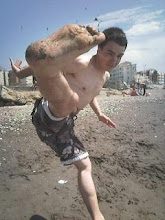The Girl Who Played with Fire
Subsequent to the events that transpired in the previous instalment, computer hacker Lisbeth Salander is accused of three murders, whilst magazine journalist Mikael Blomkvist attempts to uncover a human trafficking ring with his colleagues, whilst frantically trying to prove Lisbeth’s innocence.
The Girl who Played with Fire is the second chapter of the Millennium trilogy, adapted from the literary phenomenon from Swedish author, Stieg Larsson. Both Noomi Rapace and Michael Nyqvist return as the two protagonists, Lisbeth and Mikael, but this time round Daniel Alfredson takes on the role of director, in place of Niels Arden Oplev, who helmed previous instalment, The Girl with the Dragon Tattoo.
Unfortunately the film does not resonate the brilliance it predecessor did, being less believable, and not as foreboding, albeit the ever-present violence, sex, and rape.
The Girl with the Dragon Tattoo was one of the best films of 2009, and gave a fresh if not visceral renovation to the modern thriller. This is where the Girl who Played with Fire differs, in that it lapses into an inconsistent and unbelievable follow up. The trademark shock makes a triumphant return, but is used incorrectly, and in some cases unnecessarily. On top of this, the new additions to the cast are ever so slightly ridiculous, such as a hulking hit man, who must have got lost on the way to the latest James Bond film auditions.
Coupled with an inconsistent narrative, and an ending which disappoints, The Girl who Played with Fire is a far less superior part to the trilogy. The film has a tendency to drag as well, and magazine journalist Mikael doesn’t meet our bike riding, bisexual, computer hacker Lisbeth until the end of the film, their stories feeling awkwardly separate. On the other hand, it was interesting to delve further into Lisbeth’s back-story, and the film does have entertaining moments to it, as well as a handful of decent thrills.
In terms of how the film is shot, there are no complaints really, which is by far the best thing it has going. The shots are nicely mixed, occasionally throwing us into the fray, and sometimes making us watch from a distance, cleverly manipulating how we perceive the film.
Overall The Girl Who Played with Fire is hit and miss. It feels rushed, and thus suffers the consequences, as opposed to living up to the expectations of its predecessor. It’s not all bad though, and certainly packs a punch when it wants to, but unfortunately, not as much as it should.
Rating: 3/5
Verdict: The Average
Wednesday, 3 November 2010
Review: The Girl Who Played with Fire
Posted by James Turnbull at 12:03 0 comments
Subscribe to:
Comments (Atom)
